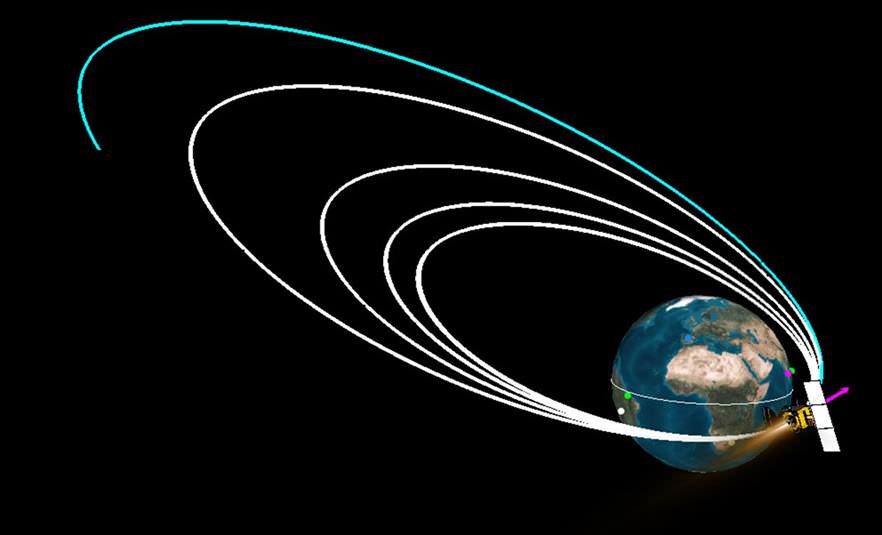

It will still have a velocity of v, but in the horizontal direction. After the slingshot occurs the spaceship is leaving on a course 90 degrees to that which it arrived on. Translating this analogy into space: in the planet reference frame, the spaceship has a vertical velocity of v relative to the planet. Because of the train's motion, however, that departure is at 130 km/h relative to the train platform the ball has added twice the train's velocity to its own.
#Solar orbiter trajectory driver
The driver of the train sees the ball approaching at 80 km/h and then departing at 80 km/h after the ball bounces elastically off the front of the train. Imagine standing on a train platform, and throwing a ball at 30 km/h toward a train approaching at 50 km/h. Ī close terrestrial analogy is provided by a tennis ball bouncing off the front of a moving train. A slingshot maneuver can therefore be used to change the spaceship's trajectory and speed relative to the Sun. The sum of the kinetic energies of both bodies remains constant (see elastic collision). In both types of maneuver the energy transfer compared to the planet's total orbital energy is negligible. To decrease speed, the spacecraft approaches the planet traveling the opposite direction from planet's orbital velocity. To increase speed, the spacecraft approaches the planet in the same direction the planet is orbiting the Sun, and departs in the opposite direction. The spacecraft's speed increases as it approaches the planet and decreases as it leaves the planet. Possible outcomes of a gravity assist maneuver depending on the velocity vector and flyby position of the incoming spacecraftĪ gravity assist around a planet changes a spacecraft's velocity (relative to the Sun) by entering and leaving the gravitational sphere of influence of a planet. (If the trajectory is designed to pass in front of the planet instead of behind it, the gravity assist can be used as a braking maneuver rather than accelerating.) Because the mass of the probe is many orders of magnitude smaller than that of the planet, while the result on the probe is quite significant, the deceleration reaction experienced by the planet, according to Newton's third law, is utterly imperceptible. Here it can be seen how the probe gains speed by tapping energy from the speed of the planet as it orbits the Sun. But when observed in the reference frame of the Solar System (fixed to the Sun), the benefit of this maneuver becomes apparent. In the planet's frame of reference, the space probe leaves with the exact same speed at which it had arrived. The gravity assist maneuver was first used in 1959 when the Soviet probe Luna 3 photographed the far side of Earth's Moon and it was used by interplanetary probes from Mariner 10 onward, including the two Voyager probes' notable flybys of Jupiter and Saturn.Įxplanation Example encounter. Any gain or loss of kinetic energy and linear momentum by a passing spacecraft is correspondingly lost or gained by the gravitational body, in accordance with Newton's Third Law. The "assist" is provided by the motion of the gravitating body as it pulls on the spacecraft. Gravity assistance can be used to accelerate a spacecraft, that is, to increase or decrease its speed or redirect its path. orbit around the Sun) and gravity of a planet or other astronomical object to alter the path and speed of a spacecraft, typically to save propellant and reduce expense.

A gravity assist, gravity assist maneuver, swing-by, or generally a gravitational slingshot in orbital mechanics, is a type of spaceflight flyby which makes use of the relative movement (e.g.


 0 kommentar(er)
0 kommentar(er)
